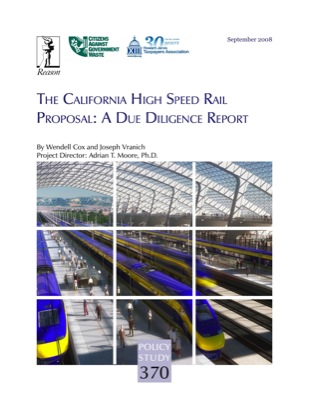The Reason Foundation just published its analysis of California’s high-speed rail plan. The full study is also accompanied by a series of policy briefs on the effects of high-speed rail on congestion, greenhouse gases, and California finances.
“The current high-speed rail plan is a fairy tale,” says Adrian Moore, Ph.D., Reason’s vice president of research. “The proposal suggests these high-speed trains will be the fastest ever; the most-ridden ever; the cheapest ever; and will convince millions of Californians they no longer need to drive or fly. Offering up a best-case scenario is one thing, but actually depending on all of these miracles to happen simultaneously is irresponsible public policy.” Moore also has an op ed on the subject in today’s Orange County Register.








